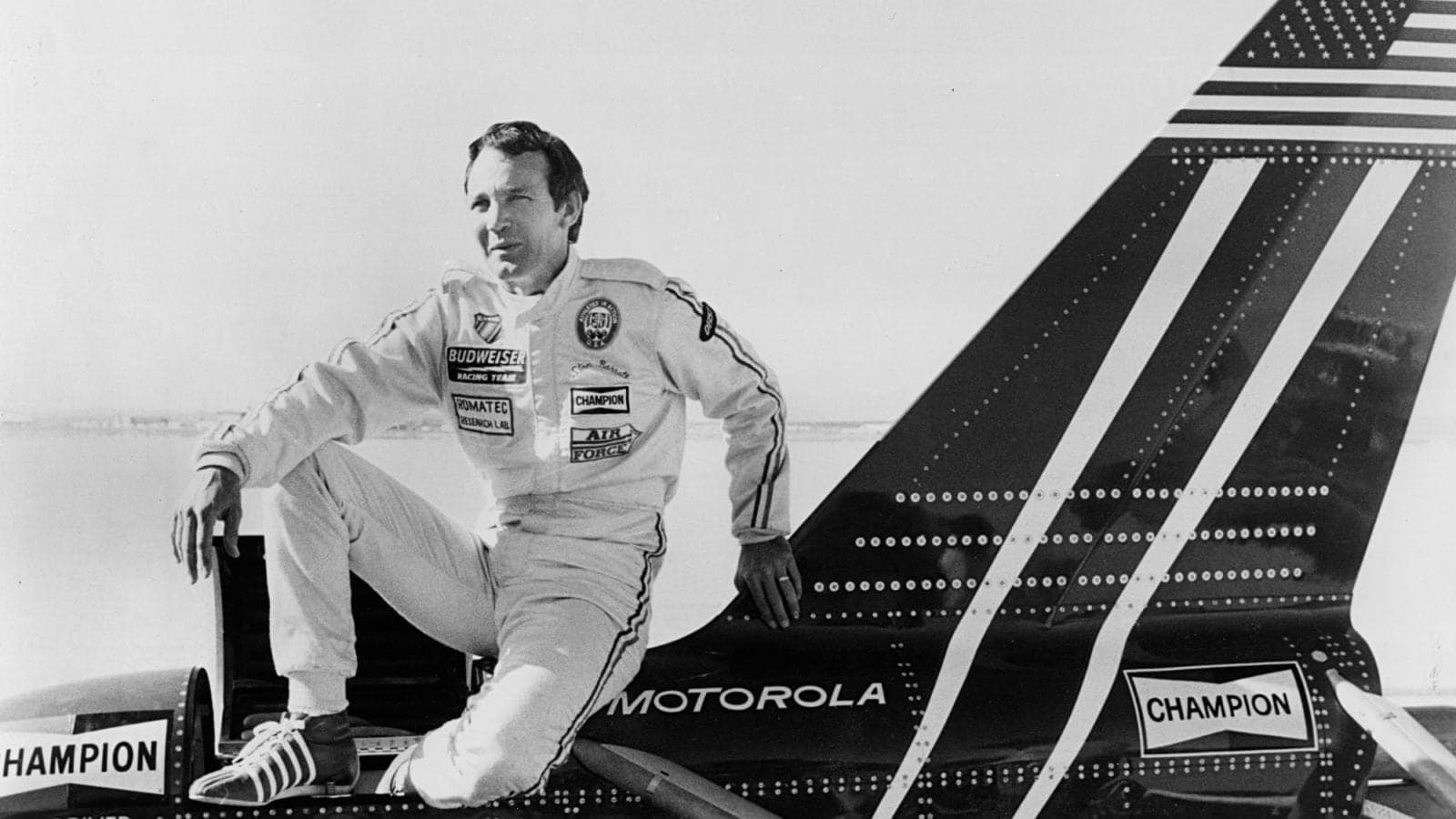Barrett is another story. Now 76, he’s still as affable and engaging as ever. A long-time boon companion of the late Paul Newman, Barrett is a devout Christian who’s travelled the world many times over doing good works. Even sceptics who’ve got no time for the Budweiser Rocket stop short of throwing Barrett under the bus. This, after all, is a man who went at least 730mph, which is hauling the mail whether the ground speed translated into Mach 1.01 or Mach 0.99.
Project SOS was often mocked as a stunt – a charge that resonated on several levels. To begin with, Needham had no interest in following the arcane and challenging protocols necessary to set a land speed record. Among other requirements, the rules require two runs in opposite directions within an hour, then averaging the speeds through a measured mile or kilometre. All Needham wanted to do was break the sound barrier and call it a day.
Speaking of stunts, Needham himself had come to fame as a stuntman, while Fredrick designed equipment for movie stunts. But Fredrick moonlighted as the builder of ingenious LSR and drag racing machinery. In 1962, he created one of the first jet-powered cars, the Valkyrie I, and he soon progressed to rocket motors. In 1977, stunt woman Kitty O’Neil drove his SMI Motivator to a woman’s speed record of 512.710mph. Needham later achieved 620mph in the same car before his parachutes failed and he embarked on history’s fastest off-road excursion. Although he wasn’t hurt, the mishap inspired Needham to retire from driving. But he was still committed to breaking the sound barrier. So he hired his protégé, Stan Barrett, to drive a new car he had commissioned from Fredrick.
A former Gold Gloves boxing champion and black belt in two forms of karate, Barrett was fearless by definition and as precise as a high-wire trapeze artist. But he’d never driven faster than 150mph before, and he was shaken by the molar-rattling violence of the ride during his first run in the Budweiser Rocket at the Bonneville Salt Flats.
“Everybody was so excited when I got out the car,” Barrett recalls. “They asked me, ‘Do you have any idea how fast you went?’ I almost said, ‘Did I just break the land speed record?’” Actually, he’d gone only 350mph, and the speed of sound seemed light years away. “Ain’t no way!” he thought. “I may have written a cheque that I can’t cash!”
It didn’t take long for Barrett to find his groove. On his ninth run at Bonneville, he hit 638.637mph. But the forged-aluminium wheels of the rocket car dug deeply into the salt, nearly causing him to wreck. Needham realised he needed a stouter surface to go supersonic. So he leaned on his friend Chuck Yeager – yes, that Chuck Yeager – to get the team access to Edwards Air Force Base, the hallowed home of the Right Stuff, where Yeager had broken the sound barrier in ’47.
The hard-packed surface of Rogers Dry Lake was perfect, but the hydrogen-peroxide motor ran out of oomph at 677mph. Needham bought six Sidewinder missiles, and Fredrick jury-rigged a mount for one of them in the tail of the Budweiser Rocket. During the first twin-rocket pass, Barrett reached 714mph. And on his 18th and final run, he exceeded the sound barrier.
Or did he?
“The data looked like what you’d expect – ugly and primitive”
Dick Keller is the most persistent and persuasive non-believer. An engineer by training, Keller was one of the creators of the Blue Flame, which Gary Gabelich had driven to the land speed record of 622.407mph in 1970 (and which was the template for the Budweiser Rocket). After enlisting the aid of a US senator, Keller was able to get his hands on the raw data the Air Force had provided to the Project SOS team.



